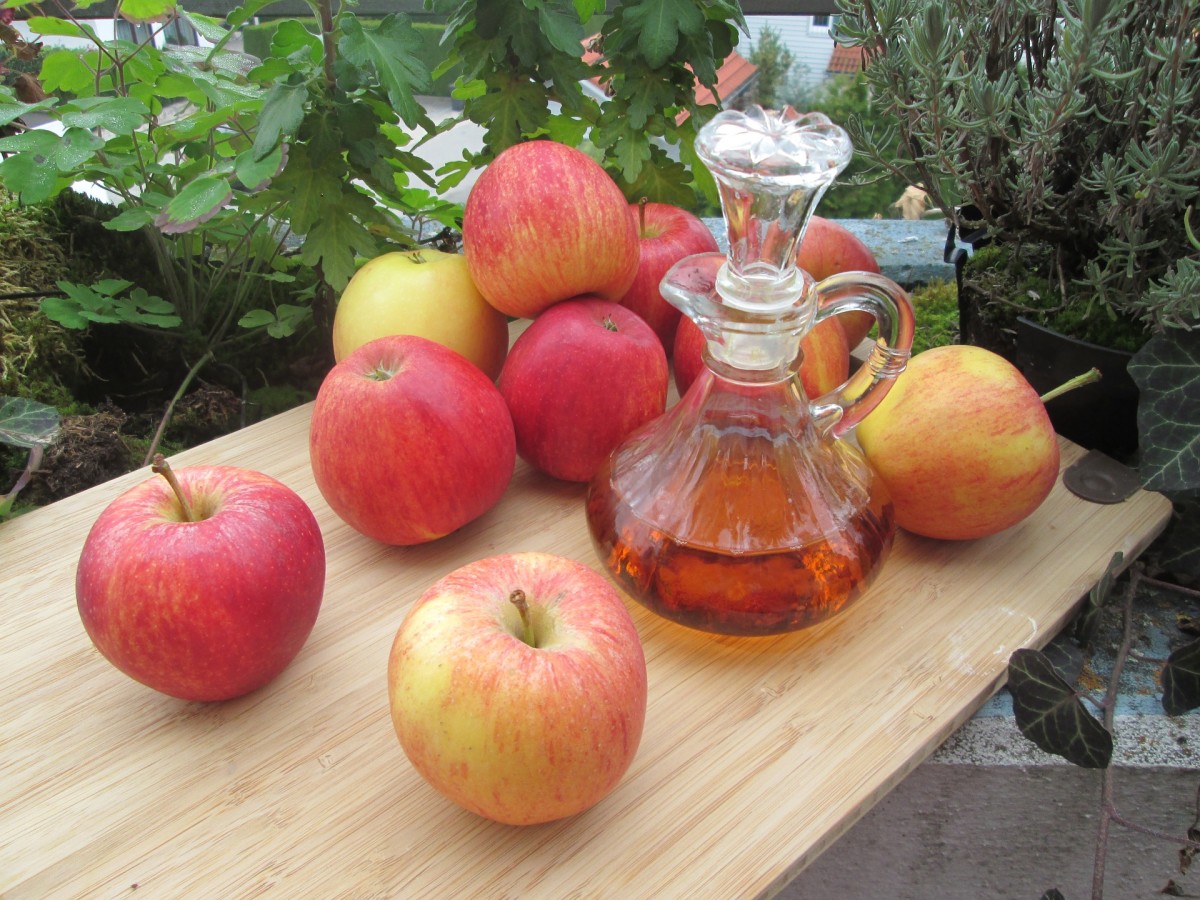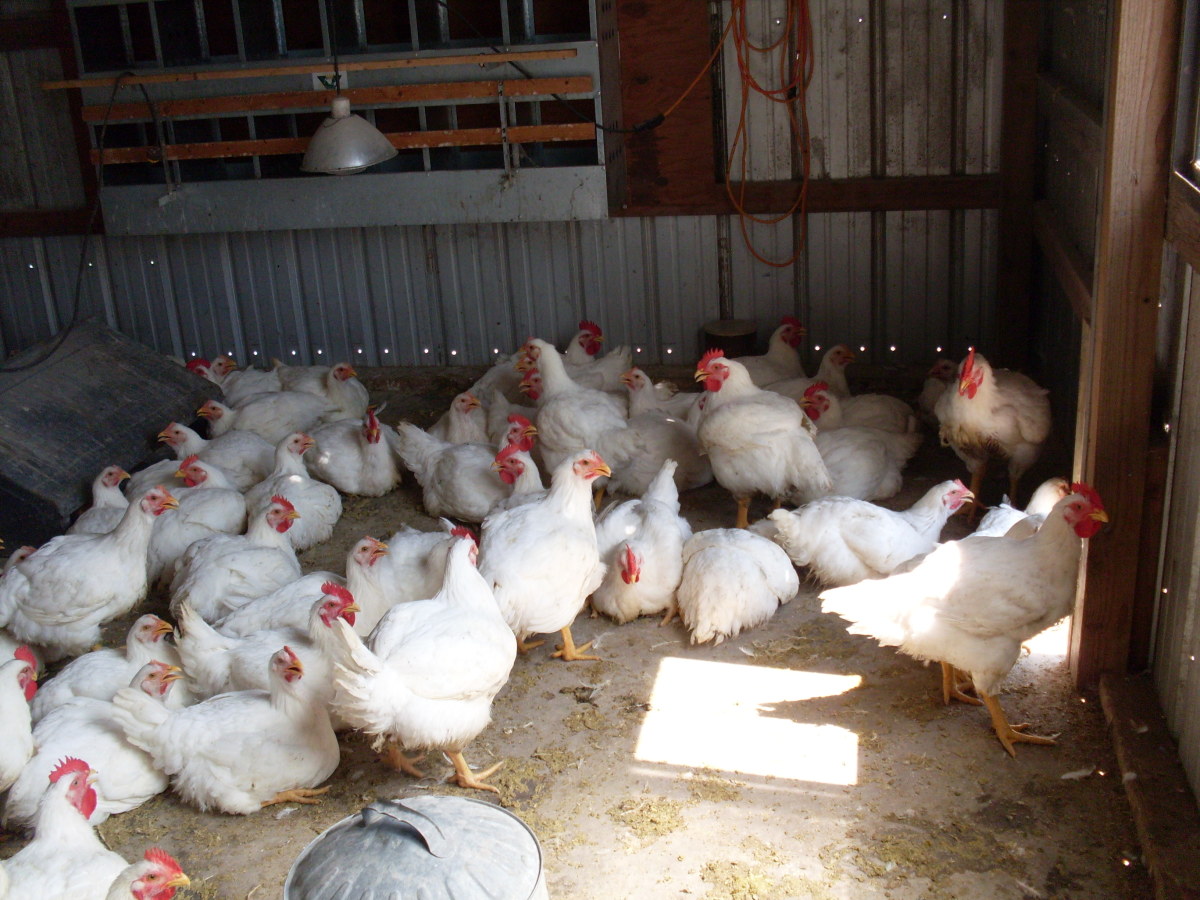Vinegars
Maison Cote Vinegars
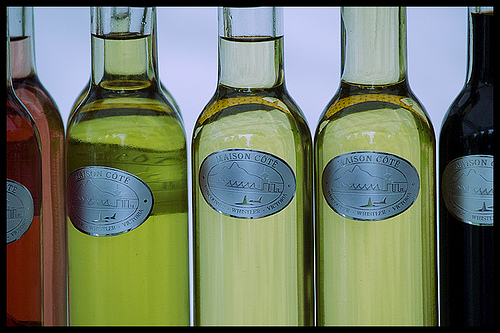
Mother of Vinegars and Vinegar Eels!
Traditional methods of making vinegar allow for the development of a cloudy slime made of acetic acid producuing bacteria and cellulose. It's harmless, and the vinegar can be filtered to remove it.
An airborne nematode (Turbatrix aceti ), called a Vinegar Eel can find it's way into vinegar bottles unless they are tightly sealed. They feed on the Mother of Vinegars slime. They are harmless if ingested, despite the singularly unappetizing thought of eels, nematodes and slime in your food.
Oregano Infused Vinegar
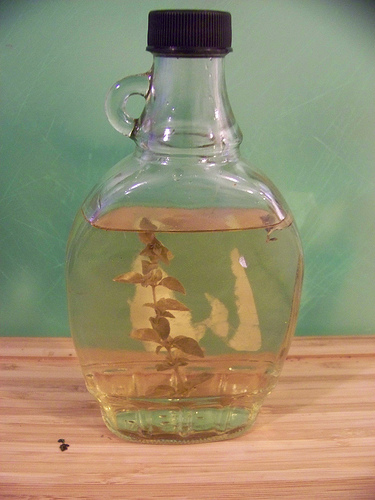
Leave it to the French to name even culinary screw-ups to the highest level of kitchen achievement. Vinegar is Old French for ‘sour wine’ – vin aigre. About 10,000 years ago someone opened a cask of wine and discovered that something had gone terribly wrong – the alcohol had fermented to the point that acetic acid (ethanoic acid) had been produced. Sugars had turned to alcohol, and then gone further to vinegar. But there was redemption – the wine wasn’t wine anymore – but what had been achieved was vinegar – one of the most remarkable culinary tools in cuisines around the world. Vinegars can be made from many liquids containing natural sugars. If it can be fermented – it can be made into vinegar. Maple syrup, cane sugar, coconut milk, honey, beer, wine, rice, potatoes, fruits of all kinds – you name it, chances are there’s a vinegar based on it.
As early as 5000 BC the Babylonians were using vinegars to flavor foods as well as preserve them. It appears in Egypt around 3000 BC, and in China as early as 2000 BC. It appears throughout the Old and New Testaments, and in Islam it was named a “Blessed seasoning” by Mohammed. Cleopatra – that tricky chick – pulled on her Scientist Costume - -showing it was a solvent. Of course she did this by dissolving a quantity of pearls and drank them to win a wager – but she did it. Soldiers from the Roman Empire to the American Revolutionary and Civil Wars have quaffed it in a variety of forms and for a number of purposes – from aphrodisiacs to the prevention of scurvy. Louis Pasteur researched with it – proving it was a result of fermentation in the 1860’s.
Perhaps my favorite vinegar story involves four thieves in France in the Middle Ages. During the Black Plague they would sneak into the houses of the dead and dying and rob them. Once apprehended they were offered their lives in exchange for the secret of their survival. How had they not contracted the plague, the judge wanted to know? Their secret? A potion sold to them by a witch, made of garlic soaked in red wine vinegar. To this day it’s used in the practice of voodoo down in New Orleans – and known as Four Thieves Vinegar. That story alone makes me want to cook something with it. Maybe there’s a gumbo in that…

Vinegar and Weight Loss
Several recent studies have been published showing that the consumption of vinegars will increase the feeling of satiation. Satiety is the feeling of fullness. So if you eat vinegars, you'll feel more full, and end up eating less. Over time this can lead to weight loss. A condiment that makes you feel as though you've eaten more, while making your food taste great? Bombshell!
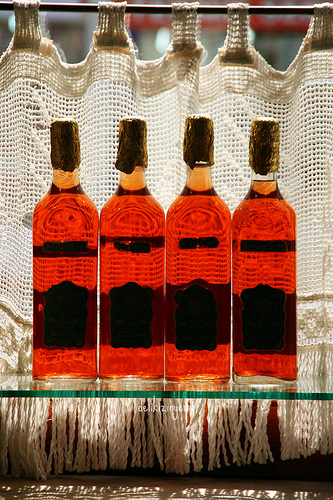
Vinegar is made traditionally by the slow fermentation of sugars; the oxidation of ethanol by acetic acid bacteria. Typically the acetic acid produced in the process has a concentration in vinegars of 4-8% - the range for table vinegars. Other acids can be present as well, depending on the source of the ethanol. Tartaric acid and citric acid are common. Vinegars are produced naturally over the course of weeks or months – and in the case of some – over the course of years. Vinegars are often aged as well – often in barrels just as wines are aged. Perhaps the queen of these vinegars is Balsamic – a fragrantly aromatic little elixir from the Modena and Reggio Emilia regions of Italy.
Vinegars can also be “forced” – produced much more quickly by oxygenating the liquid in order to increase the speed of fermentation. This process is typically used commercially, and shortens production time significantly.
A few basic vinegars are typically available in the average supermarket, with higher end or gourmet stores carrying a larger variety. Even small stores will carry a few basic types – white distilled vinegar, red and white wine vinegars, commercially produced balsamic vinegars, and perhaps sherry, champagne and rice vinegars. Distilled white vinegar is generally too harsh for cooking – although it’s great for pickling and preserving. Look for apple cider vinegar first, then branch out your inventory as you experiment.
If you have a farmer’s market in your vicinity, check it out for artesian vinegars. It can be like a treasure hunt – you never know what you might find! If you’re looking for a particular type, the Internet will be your best friend. Coconut vinegar – essential to authentic Southeast Asian and South Pacific cuisines – is one that you’ll probably have to order from an online source.
Nutritionally Speaking...
Most vinegars have little or no caloric value - meaning it's a freebie for bringing flavor to a party. The downside is that there is very little nutritional value either - although some varieties of vinegars do have traces of some nutrients that can be found in the ethanol source. Citric acid is an example of this.
Claims for health benefits of vinegars have been largely unsupported by scientific study. In fact, with the exception of a slight benefit for a glycemic index for diabetics, a possible link to a reduction in blood pressure and the above mentioned studies for weight loss, claims regarding the medicinal value of vinegar have not been borne out.
In the kitchen, vinegars can be used as you would any acid – and you can experiment with a touch of vinegar in just about any dish. You’ll be rewarded with a bright burst of flavor. But beyond that, the acid in vinegar can be a powerful workhorse. It can act as the acid in any marinade, and can form a component of a brine as well. Deglaze a pan and reduce a flavored vinegar for a quick pan sauce. Add it to poaching liquid – the acids can help proteins coagulate, helping to keep delicate fish and eggs firmer and more cohesive.
Vinegars can be used to make an acidulated water – use it to prevent potatoes, apples and other fruits and vegetables from oxidizing or turning brown before you cook them. A few drops of apple cider vinegar is amazing in apple pies, and can be used to help keep candy from becoming granular when cooking with sugar. Add a tablespoon to a cup of sweet milk, allow it to sit for a while, and you’ll have buttermilk.
Emulsify vinegar with good oil and you’ll have dressings – of all kinds. Whisked into egg yolk it’s mayonnaise. Made into a brine with salt and aromatics and you’ve got the means to make pickles. Treat it as a sauce on its own – a condiment for fish, for chicken, for potatoes – malt vinegar is amazing on french fries. Mix rice vinegars with a touch of soy sauce and sesame oil for a fabulous dipping sauce. The use of vinegars is nearly endless - Chef and author Michael Ruhlman stated that perhaps the use of vinegars alone can elevate a good cook to a spectacular one.
Please visit the website!
- The Thrillbilly Gourmet
Combining classic technique with everyday food for spectacular results!

